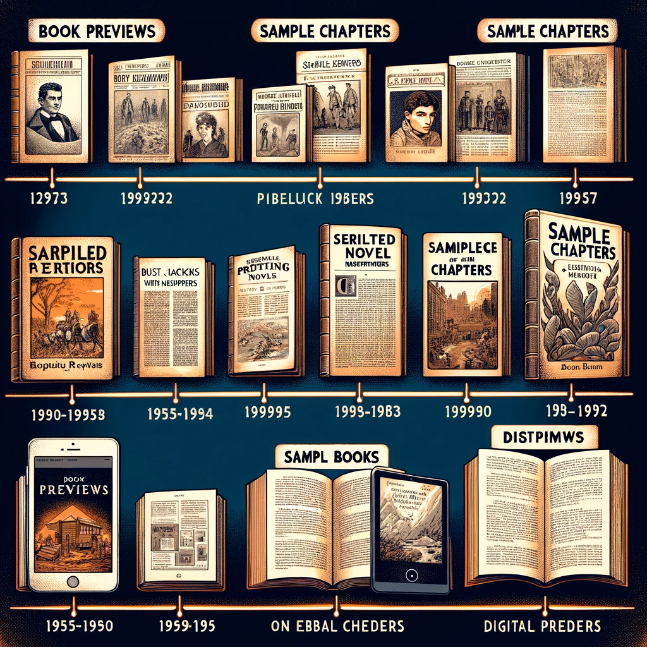History of Sample Chapters and Book Previews | Literary Marketing Evolution

Books have always held a special place in human culture, serving as vessels of knowledge, entertainment, and artistic expression. As the literary world has evolved, so too have the methods used to market books and entice readers. Among the most effective tools in literary marketing are sample chapters and book previews. This article explores the rich history of these strategies, tracing their origins and development through the ages.
Early Beginnings: The Birth of Book Previews
The concept of offering a sneak peek into a book's content is not a modern invention. Even in the early days of printed books, publishers and authors sought ways to attract readers. In the 17th and 18th centuries, it was common for publishers to include excerpts or "samples" in book catalogues and advertisements. These early book previews often consisted of selected passages or summaries designed to give potential readers a taste of the book's content.
The Rise of Serialized Novels
The 19th century saw a significant evolution in the way books were marketed, largely due to the rise of serialized novels. Authors like Charles Dickens and Arthur Conan Doyle published their works in installments in newspapers and magazines. This approach not only made literature more accessible but also served as a powerful marketing tool. Readers eagerly awaited each new installment, creating a built-in audience for the eventual publication of the complete book.
Serialized novels effectively acted as extended book previews, allowing readers to engage with the story over time and build anticipation for the full release. This method proved so successful that many authors and publishers continued to use it well into the 20th century.
The Advent of Dust Jackets
The early 20th century introduced another innovation in book marketing: the dust jacket. Originally designed to protect books, dust jackets soon became a canvas for promotional material. Publishers used them to print excerpts, reviews, and synopses, giving readers a preview of what to expect inside the book. This not only attracted potential buyers but also helped to distinguish books on crowded bookstore shelves.
Mid-20th Century: The Paperback Revolution
The mid-20th century brought about the paperback revolution, making books more affordable and portable. Publishers embraced the opportunity to reach a broader audience by including sample chapters in the back pages of paperbacks. These "teasers" encouraged readers to seek out additional titles by the same author or publisher. This practice became especially popular in genres like romance, science fiction, and mystery, where loyal readerships eagerly devoured new releases.
The Digital Age: eBooks and Online Previews
The late 20th and early 21st centuries witnessed the digital transformation of the publishing industry. The advent of eBooks and online bookstores revolutionized the way readers accessed and previewed books. Amazon's "Look Inside" feature, introduced in the early 2000s, allowed readers to browse sample chapters of eBooks and print books online. This innovation gave readers an unprecedented level of access to book content before making a purchase.
Online platforms like Google Books and Apple Books also adopted similar features, further expanding the reach and effectiveness of book previews. Authors and publishers began to leverage social media and personal websites to share sample chapters, reaching potential readers directly.
Contemporary Practices: Enhanced Book Previews
Today, the practice of offering sample chapters and book previews has become an integral part of literary marketing. Platforms like SampleChaps.com specialize in providing a dedicated space for authors to showcase their work. Enhanced book previews now include multimedia elements such as author interviews, video trailers, and interactive content, enriching the reader's experience.
The Impact on Reader Engagement
The evolution of sample chapters and book previews has had a profound impact on reader engagement. By offering a glimpse into a book's content, these strategies help readers make informed choices, build anticipation, and foster a deeper connection with the material. For authors, they provide an invaluable opportunity to attract and retain a loyal readership.
Conclusion
The history of sample chapters and book previews is a testament to the enduring appeal of literature and the innovative spirit of the publishing industry. From early excerpts in printed catalogues to the digital previews of today, these marketing tools have continually evolved to meet the changing needs of readers and authors alike. As technology advances and new platforms emerge, the future of book previews promises to be even more dynamic and engaging, ensuring that the magic of discovering a great book remains as thrilling as ever.



